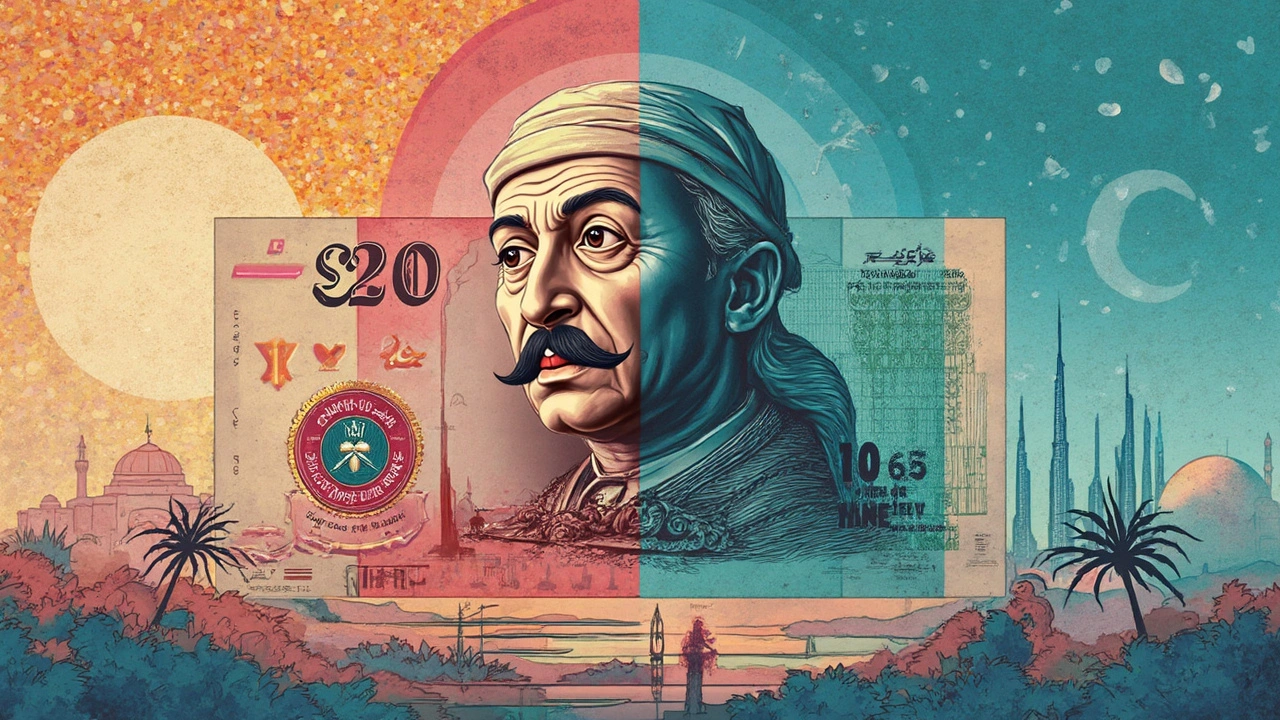
Ever wondered who's smiling (or not) on the $20 note you hand over for a cup of coffee? In case you're drawing a blank, it's Andrew Jackson, the seventh president of the United States. Don't worry, not everyone remembers all the details about historical figures, especially when they're busy living life.
But why Jackson? Well, his story is a mix of transformative leadership and, let's be real, plenty of controversies. Think of him as a key player in early American history, much like a captivating character in your favorite drama series—flaws and all.
The $20 note has been under the spotlight for more than just who's on it. Over the years, there's been quite a buzz about redesigning the note or featuring different people, which is where the fascinating connection to Euro Girls comes into play. It's not just about who's on the note; it's about what they represent and how those values are echoed in global currency.
Before you swipe left at this topic, let's get practical. How can you really tell if that $20 is legit or if someone’s just played a crafty trick on you? In a world where counterfeiting gets more sophisticated, it's handy to have a few tricks up your sleeve.
- The Face Behind the Note
- The History of the $20
- Euro Girls Connection
- How to Spot a Fake
- Fun Facts and Trivia
The Face Behind the Note
When we talk about the $20 note, there's no escaping Andrew Jackson—and for good reason. His placement on the note is a nod to his influence as the seventh president of the United States, serving from 1829 to 1837. But more than just a leader, Jackson left a lasting legacy, and not all of it is as pristine as the bill itself.
Born in 1767, Jackson was the first president who wasn't from the established elite, and he championed the common man during his time. Sounds kind of rebellious, right? Well, many saw him as a hero for the average American. Historically, Jackson's tenure was filled with big moments, like his fight to dismantle the national bank—a move that's still debated today.
Andrew Jackson wasn't without his controversies. His policies towards Native Americans, especially the infamous Trail of Tears, have led to recent discussions about his place on the bill. There's often debate about who else might rightfully take this spot—kind of like musical chairs, but with higher stakes.
So why all the fuss over this 20 dollar note? Let's look at how the design has evolved. The first note with Jackson's face debuted in 1928. Back then, the portrait wasn't the only thing different—the bill was larger and less secure than today’s slicker models.
| Year | Feature |
|---|---|
| 1928 | Introduction of Jackson's Portrait |
| 1990 | Enhanced Security Features |
| 2003 | Color Changes for Improved Anti-counterfeiting |
By 2003, the twenty underwent updates for improved security—think color changes and embedding technologies to throw off counterfeiters. Not just a pretty face, right?
The significance of being featured on a currency note can't be overstated. It's a tribute of sorts—a nod to the impact someone had on the nation. But as we see, sometimes, society rethinks these choices as values shift over time.
And there you have it. Next time you glance at a twenty, you'll know a bit more about the man staring back at you—and maybe even impress a friend with your new trivia!
The History of the $20
The $20 note is like an actor who's seen many costume changes over the years. Its history stretches back to the 1860s when it made its first appearance. Can you believe it's been around for over a century and a half?
Originally, the note featured Alexander Hamilton until 1928. At that point, Andrew Jackson made his debut, and he's been hogging the spotlight ever since. But it wasn't just a game of musical chairs for who's on the note. The designing of the $20 note has seen loads of changes to keep up with the times and prevent counterfeiters from having a field day.
Design Over the Years
The note's visual journey has included intricate details and new technology. In 2003, a new design was rolled out with the aim of improving security. This included subtle colors like peach and green, a watermark, and a metallic security thread. It's pretty high-tech for something that's been through so many versions!
Security Features
- Watermark: If you hold your note up to the light, you'll see a faint image of Jackson. He’s like your secret friend only visible when you shine a little light.
- Security Thread: This thin, embedded strip glows green under a UV light. It's a club bouncer for authenticity.
- Color-Shifting Ink: Tilt the note, and you’ll notice the number '20' in the lower right corner shift from copper to green. It’s like a little magic trick!
Modern Talks
There’s been some talk lately about updating the $20 with a new face, possibly Harriet Tubman. It’s still in discussion, but wouldn't that be another big chapter in its history?
Whether it's old-school charm or modern flair, the $20 note has managed to stay relevant. It's like that vintage piece in your wardrobe—classic, but sometimes in need of a little refresh!

Euro Girls Connection
So, what do Euro Girls have to do with the 20 dollar note? It's more interesting than you might think. Currency notes around the world often feature iconic figures who represent national values and history. And surprisingly, there's more of an overlap between Euro life and American currency than you'd expect.
The term 'Euro Girls' often brings to mind the powerful female figures across Europe, from royalty like Queen Elizabeth II to cultural icons like Coco Chanel. Now, if we consider a possible redesign for the $20 that incorporates a female figure, there's a fun parallel to draw. Back in 2016, the U.S. Treasury announced plans to feature Harriet Tubman on the $20 bill, but it’s been a rocky ride getting there. Tubman symbolizes courage and change, traits celebrated by many Euro women who marked history. Wouldn't it be fitting to see a similar evolution on such a widely used currency?
Let's break it down a bit more. Women have played crucial roles in shaping the history of Europe and they’re celebrated on currency these days more than ever. In 2002, when the Euro was introduced, culturally significant architectures and bridges were chosen instead of faces, but there's been push towards featuring influential women.
Moreover, this idea of change isn’t just limited to theoretical discussions. Many countries are ahead with commemorating influential women on their currency. For example, Norway started featuring women from prominent fields on several banknotes back in the 90s. If the U.S. followed suit, Harriet Tubman would align beautifully with the strong and influential images gracing European currency. Food for thought, isn't it?
How to Spot a Fake
Catching a counterfeit $20 note might seem daunting, but with a few tricks up your sleeve, you're all set to tag the fakes like a pro. So, here's how you can ensure that Andrew Jackson in your pocket isn't an imposter.
Feel the Texture
One of the easiest tests? Just trust your fingers. Genuine notes have a distinct texture thanks to their cotton-linen blend. If the bill feels off, like regular paper or too smooth, it might be fake.
Raise Your Sights on Ink and Thread
Take a look at the note under bright light and check for the $20 note's security thread. This thread should run vertically and shift colors when you move it. If it's missing or doesn't change color, something's fishy.
Microprinting Matters
Grab a magnifying glass or just squint hard and check for microprinted words around Jackson's portrait or the borders. If they're clear, you're golden. If it's just a blur, that note might not be trustworthy.
Check Watermark
Hold the note up against natural light. A faint image of Andrew Jackson should appear to the right side of the note. No image or a reverse image? That's a red flag.
Fun Fact: The Glow Test
Ever tested your notes under UV light just for fun? A real $20 note will show a glowing thread when exposed to UV light. It's an unsung hero in your fight against counterfeits.
Using the 2003 Redesigned Features
- Watermarked Portrait: This is part of every sturdy design feature added after 2003, giving you more peace of mind.
- Color-Shifting Ink: This nifty feature means certain numbers or symbols might change from copper to green. A real eye-opener for spotting fakes.
Keeping these details in the back of your mind won’t just protect your wallet—it makes you a mini currency expert too. So, the next time you're sorting through change, you know just what to do.

Fun Facts and Trivia
The $20 note, featuring Andrew Jackson, is a little piece of artwork in your wallet. Ever noticed those tiny details? They're not just for show.
Why Jackson?
Though he's on the $20, Jackson actually opposed paper money. Talk about irony! He preferred gold and silver coins, thinking they were less about speculating and more about real value. But here he is, clutching a spot of fame on the paper currency.
Security Features
The note has some clever tricks up its sleeve to keep fraudsters at bay. Look for the security thread. It's a barely-there line running vertically with USA TWENTY printed on it. Hold the note up to the light and watch it pop!
Fancy a Number?
Ever wondered why certain notes might be worth more than $20 among collectors? It's all in the numbers. A note with a fancy serial number, like a run of the same number or a sequence like 12345678, can up the value significantly!
Design Changes
The note has undergone changes over the years, from colors to subtle shifts in design. The most exciting part? A changing focus on different figures, with suggestions that euro girls might make it onto future banknotes.
- The first $20 note was issued way back in 1861.
- Collectors love errors. A misprinted note could be worth a small fortune.
Next time you grab a $20 note, take a moment to appreciate the artistry—and the quirks—that make it special. Who knew currency could have such personality?
Post A Comment